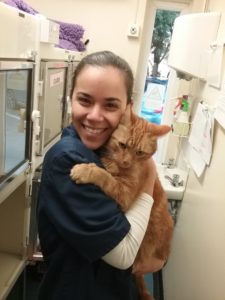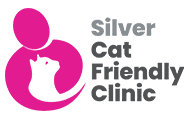11 Year Old Cat overcomes Hyperthyroidism with Radiotherapy Treatment ...
Ging is an 11 year old, male, neutered, Domestic Short Hair that came to see our vet, Ana in December 2017 for a dental. Ging had been diagnosed with a dental disease called feline odontoclastic resorptive lesions (also known as neck lesions) when in for a general health check in November 2017.
Despite being very healthy otherwise, as part of our over 10 year old dental package, we recommended running a pre-operative blood test the day of Ging's operation. The blood results were all unremarkable apart from a very mild elevation of a liver enzyme called ALT. Taking into consideration Ging's age, Ana recommended testing Ging for hyperthyroidism as increased liver enzymes are a common finding with this disease. An additional blood test ran the same day at the practice confirmed an elevated serum total T4 concentration, therefore confirming a diagnosis of hyperthyroidism.
Hyperthyroidism (overactive thyroid glands) is one of the most common diseases diagnosed in cats as they get older. We estimate it affects one in ten cats older than 10 years old. The most common clinical signs noticed by owners include weight loss despite a good or increased appetite, increased thirst, increased activity, restlessness or irritability and a poor and unkempt hair coat. Four main options for treatment are available for managing hyperthyroidism in cats, each with advantages and disadvantages - dietary management, anti-thyroid medication, surgical thyroidectomy and radioactive iodine therapy. Hyperthyroid cats that are not treated tend to deteriorate, whereas treatment will usually either return affected cats to a reasonable state of health or cure the disease completely.
After discussing all the options with Ging's parents, the family decided to go ahead with radioactive iodine treatment. Radioiodine therapy is arguably the safest and most effective treatment currently available for feline hyperthyroidism - curative in about 95% of cats after a single injection. Iodine is used to make thyroid hormone which means iodine that is radioactive will destroy abnormal thyroid cells. The iodine is injected under the skin in the scruff of the neck just like a vaccine, quickly and painlessly. The drawback is that cats then need to spend some time in a special isolation facility while they eliminate almost all of the radioactivity (in its urine and faeces) before returning home. Only a few veterinary centres are able to offer this type of treatment in the UK.
After a 3 week stay at a radioactive iodine suite, we are thrilled that Ging is now back home with a brand new healthy smile and hyperthyroidism free without ever having experienced the detrimental signs of the disease.
We are looking forward to seeing lovely Ging for his regular health checks here at Brentknoll and wish him a very long and healthy life!








